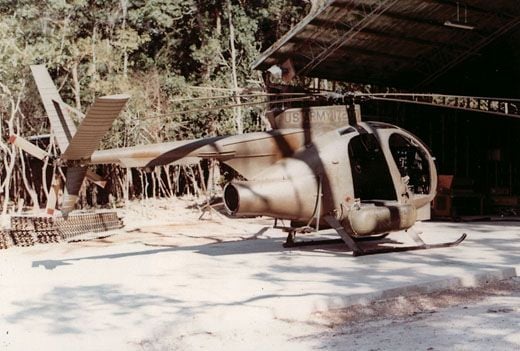Air America’s Black Helicopter
The secret aircraft that helped the CIA tap phones in North Vietnam
/https://tf-cmsv2-smithsonianmag-media.s3.amazonaws.com/filer/quiet_one_631-mar08.jpg)
BLACK HELICOPTERS ARE A FAVORITE FANTASY when conspiracy theorists and movie directors conjure a government gone bad, but in fact, the last vehicle a secret organization would choose for a stealthy mission is a helicopter. A helicopter is a one-man band, its turbine exhaust blaring a piercing whine, the fuselage skin's vibration rumbling like a drum, the tail rotor rasping like a buzzsaw.
In the last dark nights of the Vietnam War, however, a secret government organization did use a helicopter for a single, sneaky mission. But it was no ordinary aircraft. The helicopter, a limited-edition model from the Aircraft Division of Hughes Tool Company, was modified to be stealthy. It was called the Quiet One—also known as the Hughes 500P, the "P" standing for Penetrator.
Just how quiet was the Quiet One? "It was absolutely amazing just how quiet those copters were," recalls Don Stephens, who managed the Quiet One's secret base in Laos for the CIA. "I'd stand on the [landing pad] and try to figure out the first time I could hear it and which direction it was coming from. I couldn't place it until it was one or two hundred yards away." Says Rod Taylor, who served as project engineer for Hughes, "There is no helicopter today that is as quiet."
The Quiet One grew out of the Hughes 500 helicopter, known to aviators in Vietnam as the OH-6A "Loach," after LOH, an abbreviation for "light observation helicopter." The new version started with a small research-and-development contract from the Advanced Research Projects Agency (now the Defense Advanced Research Projects Agency) in 1968. The idea of using hushed helicopters in Southeast Asia came from the CIA's Special Operations Division Air Branch, which wanted them to quietly drop off and pick up agents in enemy territory. The CIA bought and then handed over two of the top-secret helicopters to a firm—by all appearances, civilian—called Air America. Formed in 1959 from assets of previous front companies, Air America was throughout its life beholden to the CIA, the Department of State, and the Pentagon.
The Quiet One's single, secret mission, conducted on December 5 and 6, 1972, fell outside Air America's normal operations. The company's public face—what spies might call its "legend"—was that of a plucky charter airline delivering food and supplies to civilians in Laos, and flying occasional combat evacuation missions in Laos and South Vietnam. While it did substantially more than that, and at considerable peril (217 of its employees died in Laos), Air America crews did not make it a practice to fly deep into North Vietnam.
The mission was intended to fill an information gap that had been galling Henry Kissinger, secretary of state under President Richard Nixon. Negotiations to end the 11-year war had begun in March 1972 but stalled in part because South Vietnamese leaders feared that North Vietnam would invade not long after U.S. troops left. A five-month Air Force and Navy bombing campaign called Operation Linebacker had brought the North Vietnamese to the negotiating table in Paris that October, but even that campaign could not force a deal. Kissinger wanted the CIA to find out whether the North Vietnamese were following the peace terms or just using them as a smokescreen for attack plans.
From its intelligence work a year earlier, the CIA knew about a weak point in the North Vietnamese wall of security: a telephone line used by the country's military commanders, located near the industrial city of Vinh. A patrolled bicycle path ran alongside the string of telephone poles, but at one spot, about 15 miles southwest of Vinh and just east of the Cau River, the phone line went straight up a bluff, over a ridge, and down the other side. The terrain was too steep for bikes, so the path followed the river, which flowed around the bluff, rejoining the telephone poles on the bluff's far side (see hand-drawn map, p. 67). This would be the best place to drop off commandos to place a wiretap.
Because the Vinh tap would be sending its intercepts out of North Vietnam, across Laos, and into Thailand, it would need a solar-powered relay station that could catch and transmit the signal, broadcasting from high ground. The station would be within earshot of enemy patrols, so both the tap and relay would have to be dropped in by helicopter—a very quiet one.
Disturbing the peace
The Hughes Tool Aircraft Division had started working on such a helicopter in 1968; that year an affluent suburb of Los Angeles had bought two piston-powered Hughes 269 helicopters for police patrols. Citizens soon called to complain about the noise of the low-flying patrols, and the city told
Hughes to either make them quieter or take them back. An emerging market for police patrols was at stake. Engineers at Hughes identified one of the worst of the noisemakers: the tail rotor. By doubling the number of blades to four, Hughes was able to cut the speed of the rotor in half, which reduced the
helicopter's noise.
Coincidentally, the Advanced Research Projects Agency was hunting for contractors who could cut noise from military helicopters of all sizes. After hearing about Hughes' work on the police helicopters, ARPA offered the company $200,000 in 1968 to work similar magic on a Hughes OH-6A light helicopter. Hughes Tool made a short movie about the modifications, which included a new set of gears to slow the tail rotor, and showed it to ARPA. "ARPA came back and offered a blank check to do a Phase Two of the program with no holds barred," recalls Taylor, the project engineer. "Each and every noise source in the helicopter was to be addressed in an attempt to reduce the signature to an absolute minimum." ARPA gave the project the code name Mainstreet. Even before work was fully under way, the CIA ordered two (later registered as N351X and N352X) for use in the field. Test flights began at Culver City, California, in 1971, followed by a brisk training program for the U.S. instructor-pilots who would later train mission pilots.
Flights of the Quiet One included low-level work at the secret Air Force base Area 51 in Nevada and touchdowns on peaks in California to familiarize pilots with close-quarters maneuvering and landing in darkness. Pilots needed at least eight hours to get comfortable with steering by sole reference to the comparatively narrow view of the forward-looking infrared (FLIR) camera, which was mounted just above the skids. Says Allen Cates, an Air America pilot who flew one in 1973: "When you saw a person, it was like looking at a photo negative. Or you'd see just the hood of a car, glowing from heat off the engine block…. And when you were landing, a blade of grass looked as big as a tree."
The slapping noise that some helicopters produce, which can be heard two miles away or more, is caused by "blade vortex interaction," in which the tip of each whirling rotor blade makes tiny tornadoes that are then struck by oncoming blades. The Quiet One's modifications included an extra main rotor blade, changes to the tips on the main blades, and engine adjustments that allowed the pilot to slow the main rotor speed, making the blades quieter (see "How To Hush a Helicopter," p. 68). The helicopter also had extra fuel tanks in the rear passenger compartment, an alcohol-water injection system to boost the Allison engine's power output for short periods, an engine exhaust muffler, lead-vinyl pads to deaden skin noise, and even a baffle to block noise slipping out the air intake.
The extensive alterations did not blank out all noise, Taylor says. Rather, they damped the kinds of noise that people associate with a helicopter. "Noise is very subjective," he says. "You can reduce the overall noise signature and an observer will still say, 'I can hear it as well as before.' It's related to the human ability to discriminate different sounds. You don't hear the lawnmower next door, but a model airplane is easily heard. It has a higher frequency and seems irritating."
Hughes shipped the two Quiet Ones to Taiwan in October 1971. Under the CIA's original plans, the Vinh wiretap mission would be flown by pilots from the Taiwanese air force's 34th Squadron. This would offer the United States some deniability, however flimsy, if any of the helicopters were captured. The pilots' U.S. instructors included two veteran helicopter pilots with experience flying low-level missions in Vietnam: Lloyd George Anthony Lamothe Jr. and Daniel H. Smith. The two had joined Air America six months earlier for that purpose.
The decoys arrive
Meanwhile, Air America's fleet in Thailand accepted delivery of two more Hughes 500 models—standard ones—and used them for air taxi operations. The job of these plain-vanilla Loaches was to distract attention from the Quiet Ones before they even landed in Laos. Loaches were common in Vietnam but not in Laos, so Air America needed to start using them in full view of North Vietnamese sympathizers. That way, if an enemy observer later saw the modified Loaches flitting past on a moonlit night, he might not consider the event worthy of comment.
Initial flight training on the Quiet Ones, conducted in Taiwan, was complete by June 1972. The two helicopters and their gear traveled on a C-130 transport to an isolated airstrip in Thailand called LS-05. Mechanics pulled them out, swung the rotor blades for flight, and filled the tanks, and the two helicopters flew by night to an even more obscure base, a secret one in southwest Laos known to insiders as PS-44. PS stood for "Pakse Site," a reference to the garrison town of Pakse, 18 miles to the southeast. PS-44 had been built to house Laotian commandos and the aircraft that flew them around. Its dirt strip and three tin-roof buildings sat on the edge of a plateau, surrounded on three sides by steep ground that was unusual for its expanses of bright beach-like sand, eroded from nearby cliffs of white sandstone.
It appeared to be far away from everything, but it was not far from the enemy. By late 1972, units of the North Vietnamese army were ensconced 20 miles to the north. To offer some peace of mind, the CIA had Air America keep a turbine transport helicopter, the Sikorsky S-58T "Twin Pack," handy for evacuations. More reassuring, the terrain was so steep and overgrown that the enemy could have stormed it from only one direction: the west. The base also relied on a perimeter of six guard posts staffed by Laotian soldiers, and reinforcements could have been called in from a base lying southwest, along the Mekong River.
No pictures allowed
Cameras were discouraged at PS-44, and photographing the Quiet One was strictly forbidden. Crews already knew the risk of telling tales in the bars and brothels of Southeast Asia, but even inside the base, the code of silence persisted. "You just
didn't come up and introduce yourself at PS-44," says Dick Casterlin, an Air America pilot who came to the base often. "Nobody talked about their personal background or where they were from." Men who worked closely for months knew each other only by first names or nicknames. The CIA itself had its own nickname at PS-44: The men called it simply "the Customer."
Casterlin flew an S-58T helicopter during some of the wiretap attempts, accompanying the Quiet One in order to rescue the wiretap teams if that became necessary. Casterlin had a security clearance for special missions, but even he wasn't told where the CIA had hidden the Quiet One.
According to base manager Stephens, the Quiet One was kept out of sight about 600 yards northwest of PS-44's main building, reachable down an unmarked, narrow forest trail. Because of the distance, the forests, and the quieting gear, the helicopter couldn't be heard from the porch of the base's main building unless it was flying overhead. Even then, at night, it sounded like a far-off airplane. The helicopter had its own hangar so Soviet spyplanes and satellites could not get a look at the peculiar profile produced by the extra main rotor blade, a tail rotor with blades in an odd scissored configuration, and big muffler on the rear fuselage.
Between June and September, Lamothe and Smith tried to train the Taiwanese crews to fly the mission, but after months of poor performance by the trainees—including a botched night landing that demolished one of the two Quiet Ones—and bickering over who would be the chief pilot, the CIA managers got fed up and sent the whole contingent home. Lamothe and Smith prepared to fly the mission themselves.
At the same time, the agency placed the project under new management. James Glerum arrived in Pakse to direct operations. Glerum had been the CIA's assistant base chief at Udorn Royal Thai Air Force Base when the Quiet Ones landed in Laos. The new assignment demonstrated how urgently the state department wanted the wiretapped information, according to Air America chief helicopter pilot Wayne Knight. Glerum, he says, was a CIA "super-grade," outranking many careerists at headquarters.
Soon after his arrival, Glerum quizzed Smith and Lamothe on their cover story. When he realized they had none, he provided them with false identities and a story to go with them in case of capture.
More help came from Air America, which was offering up its best aircraft (the term used was "gold-plated") and its most experienced men to support the mission. One was Thomas "Shep" Johnson, a rangy Idahoan with a background in smoke-jumping. Johnson had started with Air America in its first year, 1959, rigging bundles with parachutes and pushing them out of aircraft. A year before, he had been one of only three men to survive a North Vietnamese attack at another Laotian air base. Johnson's main responsibility was to train a squad of eight Laotian commandos for the Vinh wiretap mission. For years, the commandos had been fighting communist forces and had reported on enemy traffic along the Ho Chi Minh Trail in eastern Laos. A group of 100, they lived in a separate part of PS-44 and manned the perimeter.
The CIA had hoped to get the wiretap in place before monsoon season, but a series of mishaps and equipment malfunctions, compounded by the monsoons starting early, delayed the mission. "We had a string of unbelievably bad weather," says Glerum. "Normally, November to January is the rainy season. It had started right as I got there [in October]." Twice Lamothe and Smith took off from PS-44 to fly the wiretap mission, refueling in eastern Thailand and heading into enemy territory, only to turn back after running into clouds in the passes or fog at the wiretap site. "The preparation for the mission was a very hectic time," says Stephens, "but it also seemed like it dragged on forever."
TECHNICAL DIFFICULTIES
Hughes technicians toiled over the troublesome infrared camera; problems with it had forced cancellation of an October 21 attempt. "The FLIR [forward-looking infrared] required a lot of work," recalls Glerum. Other gadgetry included SU-50 night-vision goggles (their first use in Laos), which worked only when the moon was a quarter to a half full. The helicopter also had a long-range navigation system (LORAN-C).
Any mishap during the night flight into North Vietnam, particularly while the crew maneuvered among trees and telephone poles, would doom the mission and probably its participants. By day Lamothe and Smith studied photos and maps marking the stealthiest route to the target. By night they practiced by using LORAN to navigate from the hangar to a nearby training ground they called the Hole. The topography of the Hole was an "astonishingly accurate duplicate" of the actual wiretap site, according to Glerum. Flying into and out of it was "no problem in the daytime, [but] it could be a bugger at night," recalls Casterlin. Smith and Lamothe dropped the commandos near a simulated telephone pole (a tree stripped of branches and equipped with a cross arm) and flew to a pre-selected tree, where they laid out the radio rig called the spider relay.
The spider relay was to be deployed as the helicopter hovered over a tree. With its solar panels, electronics boxes, and antennas sprung open to a width of almost 10 feet, the relay perched atop the branches with a fishnet-like webbing. It was nearly impossible to see from the ground. The relay could be folded into a compact package that fit between the helicopter skids, but there was so little ground clearance left after it was attached, the pilots could land only on a hard, flat surface.
When each night's practice was complete, Lamothe and Smith flew back through the darkness to the concrete landing pad, which was shaped like an old-fashioned keyhole. The approach to landing was memorable because the Quiet One used no landing lights; it relied on an infrared floodlight on the nose. The light cast an eerie, ruddy glow.
Some of the biggest threats to mission success came not from North Vietnamese army spies but from plain bad luck. One flight opportunity was lost when a scorpion bit a wiretap team commando, setting off an allergic reaction. On one of the training flights at the Hole, after Lamothe and Smith deployed the spider relay used for practice, it slid off the branches and crashed to the ground, with pieces scattering. Training for the mission could not proceed without the relay, and joyful speculation spread among the ranks: It would be a month or more until a new spider could come from the States, so the men could go on leave.
But no: Stephens flew to the spot by helicopter, slid down a rope, and helped technician Bob Lanning bag up the pieces. Back at camp, Lanning laid them out on a floor and said he could get the relay working if he had some new parts. "Jim Glerum sent a cable," says Stephens, "and in three days we had the parts by courier. Bob worked two and a half days, almost nonstop, and put it back together. So we only lost a few days."
With the moon entering the favorable phase, the rescue crews moved to a forward staging base in eastern Thailand while Lamothe, Smith, and the Quiet One remained at PS-44. An attempt was scheduled for the night of December 5, amid rising doubts among Air America veterans as to whether the scheme would ever work.
That night, the Quiet One flew to a refueling base at the Thai-Laotian border, where it met a de Havilland DHC-6 Twin Otter with the Laotian commandos. Two commandos with guns and the wiretap equipment climbed aboard the Quiet One, and the rest stayed on the Otter with parachutes and more guns in case they were needed for a rescue. Accompanied by an armed Twin Pack flown by Casterlin and Julian "Scratch" Kanach, the Quiet One set course for the northeast. The Twin Pack broke away at the North Vietnamese border and took up a slow orbit over Laos, out of radar range but on call if needed. Despite the Twin Pack's readiness to play the rescue role, security was as tight as ever. "I did the LORAN navigation, but I didn't have the coordinates of the wiretap location," Casterlin says. "I assumed they'd tell me if I needed to know, or maybe Scratch knew."
Leaving the Ho Chi Minh Trail, and without being targeted by the anti-aircraft defenses along it, Lamothe and Smith climbed to cross the Annamese mountains, then dropped to follow the nap of the earth, following streambeds when possible. When the pilots identified the wiretap spot, they hovered, and the two Laotian commandos jumped a few feet to the ground.
Lamothe and Smith then flew west across the Cau River to a 1,000-foot-high mountain to set the spider relay. Finding the ideal tree for the relay had taken months of intense photo-
reconnaissance work. The tree had to be tall, on high ground with a clear view of the western horizon, and flat at the crown. An Otter orbited over a receiver relay, which was already in place atop another mountain halfway into Laos. Inside the Otter, technicians were watching an oscilloscope measure a test signal from the spider relay.
Meanwhile, the Laotian commandos at the wiretap site found that the poles were concrete rather than wood, so they couldn't use their pole-climbing boots to get up them or a stapler to attach the antenna. The men shinnied up instead. After splicing into the phone wires, they put the tap in place; it was concealed in a glass insulator of the same color used on the French-built line. The commandos began taping up the short-range antenna and installing narrow solar panels atop the pole's cross-arm. This would power the tap's transmitter.
When Lamothe and Smith heard from the Otter that the Thai oscilloscope was getting a clear signal from the spider relay's transmitter, they threw a switch that released the last cables connecting the spider relay to the helicopter and flew the Quiet One to a streambed to wait for the commandos to finish attaching the solar panels. At the scheduled time, Smith restarted the helicopter's turbine; he picked up the commandos at the wiretap site and the team returned to Laos without incident. Those listening to progress reports at PS-44, Udorn, and the Lima 40A refueling site were pleasantly startled to hear that the crew was on its way back and the tap was in place without a firefight, recalls Wayne Knight.
"What makes the Vinh tap so special is that they pulled it off," Knight says. "It had to be right the first time."
DISAPPEARING ACT
Lamothe and Smith left the Quiet One at PS-44 and flew to the CIA's regional office at Udorn by conventional aircraft. Much celebration at ensued there—perhaps too much. During the subsequent R&R, someone at the Wolverine Night Club in town bit off part of Smith's ear. If a reprimand for attracting attention was ever entered in Smith's secret personnel file, it didn't matter: The CIA had no plans to send the Quiet One up again, and within a week all the Americans connected with the mission and their equipment were on their way out of Laos.
Recollections differ on how long the Vinh tap worked—perhaps one to three months—and why it went silent. But allegedly it yielded enough inside information from the North Vietnamese high command to help nudge all parties to sign a peace pact in late January 1973. Exactly what Kissinger eavesdropped on remains classified.
"I was not aware of any specifics Kissinger and company were looking for," Glerum says. "Since the land line [at Vinh] was understood to hold the command channel, virtually anything would have been welcome."
The one flyable Quiet One relocated to California. Air America pilots Allen Cates and Robert Mehaffey trained on it at Edwards Air Force Base, achieving proficiency in early 1973. Then, before any special-mission training began, and with no explanation, Cates and Mehaffey were sent back to their old piloting jobs at Air America. Mechanics pulled most of the special features out of the Quiet One, and its trail of insurance and registration papers ends in 1973, after it was transferred to Pacific Corporation of Washington, D.C., a holding company used as a screen for CIA-backed companies and assets.
"The agency got rid of it because they thought they had no more use for it," says Glerum. At least one of the ex-Quiet Ones surfaced years later at the Army's Night Vision & Electronic Sensors Directorate in Fort Belvoir, Virginia.
But according to the participants, no more were built. It's puzzling why the CIA did not keep a stable of Quiet Ones, at least while the technology remained under wraps. And it remained a secret for more than two decades, until Ken Conboy and James Morrison told the story in their 1995 book Shadow War.
But there were valid reasons for dropping the Quiet One from the spymasters' catalog.
"In the long run, the 500P was not the best for setting wiretaps," says Casterlin. "It was not good for high-altitude work." It was a light helicopter and had to be loaded with gear that cut into its payload capability and operating altitude. The Twin Pack was much louder but also simpler to run and more powerful, so Air America used it for later wiretap missions in North Vietnam. At least one tap, placed on the night of March 12-13, 1973, was successful.
Some of the Quiet One's innovations did show up on later helicopters, including the Hughes AH-64 Apache, which has a scissor-style tail rotor. And Hughes engineers' interest in modifying the tips of the main rotor blades to cut the slapping noise caused by blade vortices has been taken up by other experts. Aerospace engineer Gordon Leishman and his team at the University of Maryland, for example, are developing a blade with curved tubes at the tip to divert the air, thereby countering vortex formation. But, thanks to its many unusual modifications, the 500P still holds the title that Hughes gave it in April 1971: "the world's quietest helicopter."
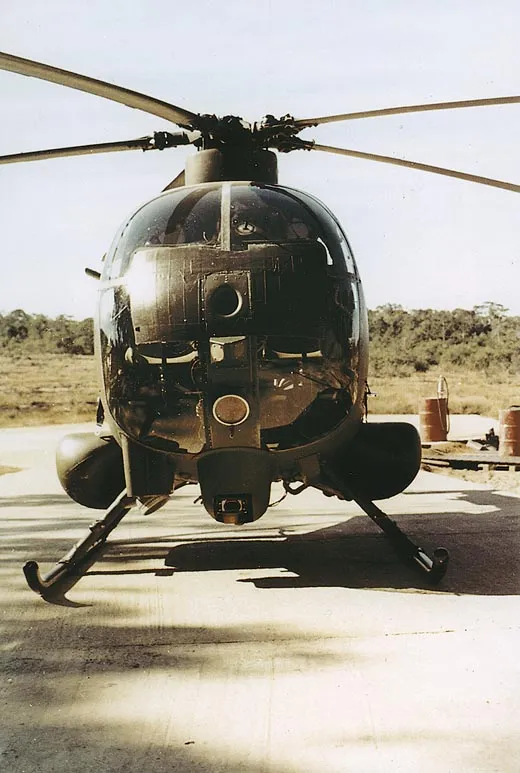
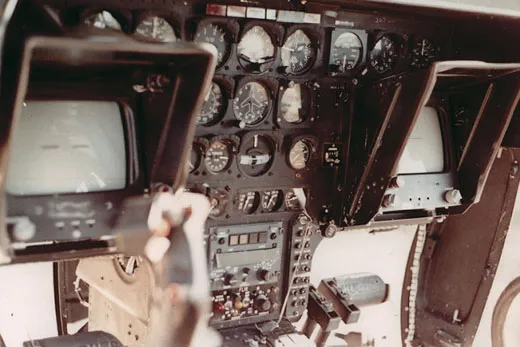
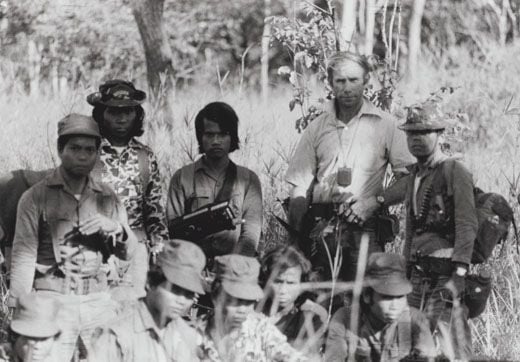
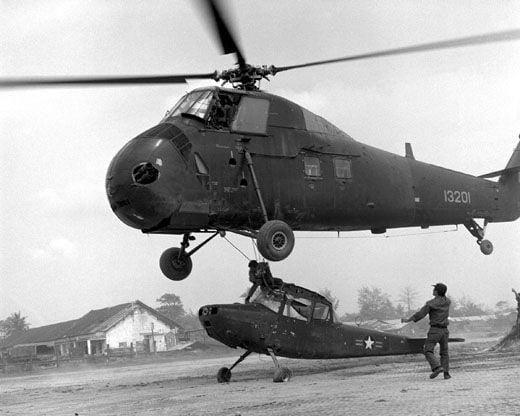
/https://tf-cmsv2-smithsonianmag-media.s3.amazonaws.com/filer/FM08_black-helicopter-4.jpg)
